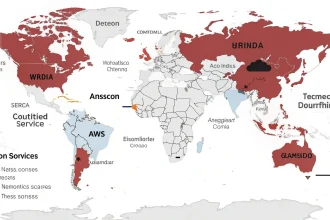Chipmaker Wolfspeed announced Monday it has successfully emerged from Chapter 11 bankruptcy protection after implementing significant financial restructuring. The company has reduced its total debt burden by nearly 70% and decreased its annual cash interest expenses by approximately 60%.
The semiconductor manufacturer’s exit from bankruptcy marks a critical turning point for the company, which has been working to stabilize its financial position amid challenges in the competitive chip industry. This restructuring provides Wolfspeed with improved financial flexibility as it moves forward.
Financial Restructuring Details
The debt reduction strategy implemented by Wolfspeed represents one of the more substantial financial overhauls in the semiconductor sector in recent years. By cutting debt by almost 70%, the company has significantly lightened its balance sheet obligations.
The 60% reduction in annual cash interest expenses will free up substantial capital that can potentially be redirected toward operations, research and development, or other strategic initiatives. This improved cash flow position could prove crucial for the company’s long-term recovery plans.
Financial analysts note that such dramatic debt reduction typically requires negotiations with creditors and often involves debt-for-equity swaps or other financial mechanisms that alter the company’s capital structure.
Industry Context and Outlook
Wolfspeed operates in the highly competitive semiconductor industry, which has faced various challenges including supply chain disruptions, shifting demand patterns, and intense competition from global players.
The company’s bankruptcy filing and subsequent restructuring reflect broader pressures within segments of the chip industry, particularly for mid-sized players competing against industry giants with deeper pockets.
With its improved financial position, Wolfspeed may now be better positioned to:
- Invest in product development and innovation
- Respond more flexibly to market changes
- Pursue strategic growth opportunities
- Compete more effectively against larger industry players
The semiconductor industry remains essential to numerous sectors including automotive, consumer electronics, telecommunications, and industrial applications. Wolfspeed’s recovery could have implications for customers and partners who rely on its chip products.
Restructuring Impact
The company has not publicly detailed all aspects of its restructuring plan or how the debt reduction was achieved. Typical Chapter 11 reorganizations involve negotiations with creditors, potential changes to management, operational adjustments, and sometimes asset sales.
The successful exit from bankruptcy suggests that Wolfspeed’s reorganization plan received necessary approvals from creditors and the bankruptcy court, allowing the company to continue operations with a more sustainable financial structure.
“Reducing our debt by nearly 70% represents a fundamental strengthening of our financial foundation,” a company representative might note. “The 60% reduction in annual interest expenses gives us significantly more financial flexibility.”
The chipmaker now faces the challenge of rebuilding market confidence while executing on its business strategy with a healthier balance sheet. Industry observers will be watching closely to see if the financial restructuring translates into improved operational performance and market position in the coming quarters.
As Wolfspeed moves beyond bankruptcy, the company’s experience highlights both the challenges facing certain segments of the semiconductor industry and the potential for financial restructuring to provide a path forward for struggling technology companies.









